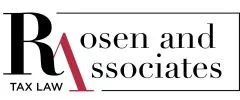What a Taxpayer Needs to Know About CRA (Re)Assessments & Subsection 152(4) of the Income Tax Act
The Canada Revenue Agency (CRA) has several key powers regarding the administration and enforcement of Canadian Tax Laws. The CRA can examine taxpayers' books, records, and documents for any purpose related to the administration or enforcement of tax laws, including, but not limited to, requesting, inspecting, auditing, or examining books and records from taxpayers.
In contrast, the CRA operates within specific limitations and procedural requirements when assessing or reassessing taxpayers. Taxpayers have rights and may challenge the CRA's actions through various review, objection, and appeal processes.
The CRA's Powers of Assessment and Reassessment
Among the abilities that the CRA possesses are those of assessments and reassessments.
An assessment by the CRA is defined as an initial review and calculation of the taxes owed by a taxpayer based on a taxpayer's annually filed return. Essentially, the CRA will process a taxpayer's return and issue a Notice of Assessment, summarizing the taxpayer's income, deductions, credits, and the resulting tax liability or refund. The Notice of Assessment confirms that the CRA has received and processed a tax return.
A reassessment occurs following a Notice of Assessment when the CRA reviews and opts to change a previously assessed tax return. Essentially, the CRA will issue a Notice of Reassessment detailing the changes and revised tax calculation for a specific tax year. There are a variety of reasons as to why the CRA may initiate a Reassessment, such as:
- correcting errors or omissions;
- following up on an audit or review;
- implementing changes resulting from an objection or appeal; and
- adjusting claims based on new information.
Taxpayers should thoroughly review their Notice of Assessment and any Subsequent Notice of Reassessment for a given tax year. Generally, if a taxpayer disagrees with the CRA's calculations or decisions in an assessment or reassessment, they have the right to file a Notice of Objection within 90 days of the date of issuance of the Notice of Assessment or Notice of Reassessment.
Limitations to the CRA's Ability to Assess and Reassess
Section 152(4) of the Income Tax Act outlines the parameters by which the CRA can issue Notice of Reassessments, whereby a time limit is imposed.
Normal Reassessment Period
The period in which the CRA can assess or reassess a tax return extends to and includes the day that is three (3) years from the date of the initial Reassessment period, which is the date of the original Notice of Assessment or notification that no tax is payable. It should be noted that the normal Reassessment period for a mutual fund trust or a corporation other than a Canadian-Controlled Private Corporation (CCPC) is extended to four (4) years from the date of the original CRA Notice of Assessment.
For example, if a taxpayer filed their 2020 income tax return on April 30, 2021, and the CRA issued the original Notice of Assessment on June 1, 2021, this means that the normal reassessment period will remain until June 1, 2024.
Extended Reassessment Period
There are certain exceptions where the CRA can reassess a taxpayer, preceding the normal reassessment period, at any time for a period of 6 to 7 years. Section 152(4) of the Income Tax Act provides that a reassessment must be made within six (6) years of mailing the original Notice of Reassessment or notice that no tax is payable. It should be noted that the extended reassessment period is seven (7) years for a mutual fund trust or a corporation other than a CCPC.
Nevertheless, there are instances when the CRA has no limit on assessing or reassessing a taxpayer.
In these scenarios, the CRA bears the initial burden of proof to reassess a taxpayer's statute barred (beyond the normal reassessment period) if they can establish, on a balance of probabilities, that the taxpayer made a misrepresentation in their returns attributable to neglect, carelessness, fraud, or wilful default, as stipulated in subsection 152(4)(a)(i) of the Income Tax Act. The CRA does not have to demonstrate the intent of the taxpayer to deceive or defraud the government, as negligence can arise from an innocent mistake.
If the CRA can demonstrate that these conditions have been satisfied on a balance of probabilities, the onus of proof shifts to the taxpayer to prove that the reassessments were incorrect.
Conclusion
The CRA has substantial authority in administering and enforcing Canadian tax laws. However, taxpayers are not powerless in these situations and can challenge the CRA's decisions.
The content of this article is intended to provide a general guide to the subject matter. Specialist advice should be sought about your specific circumstances.



